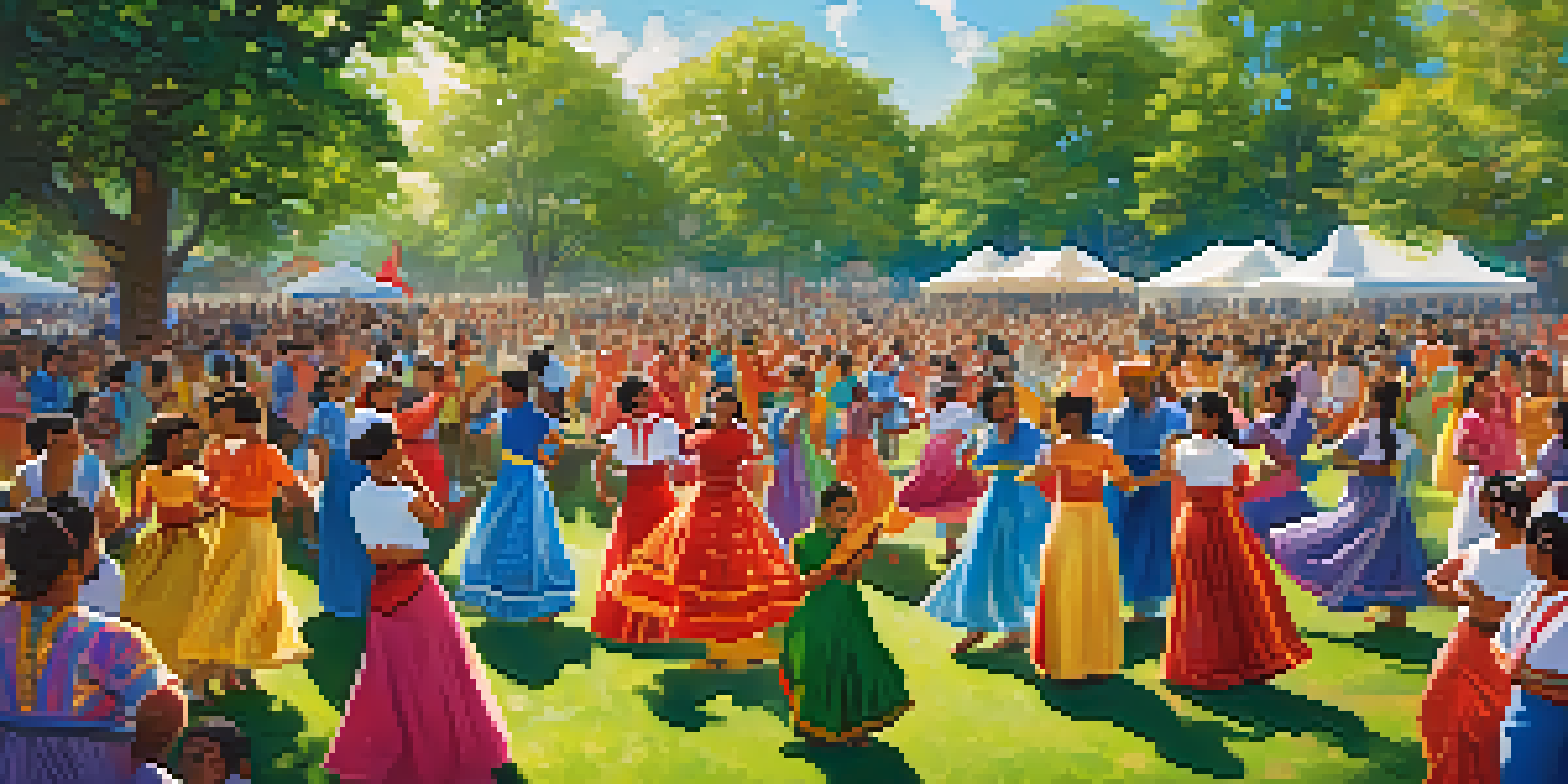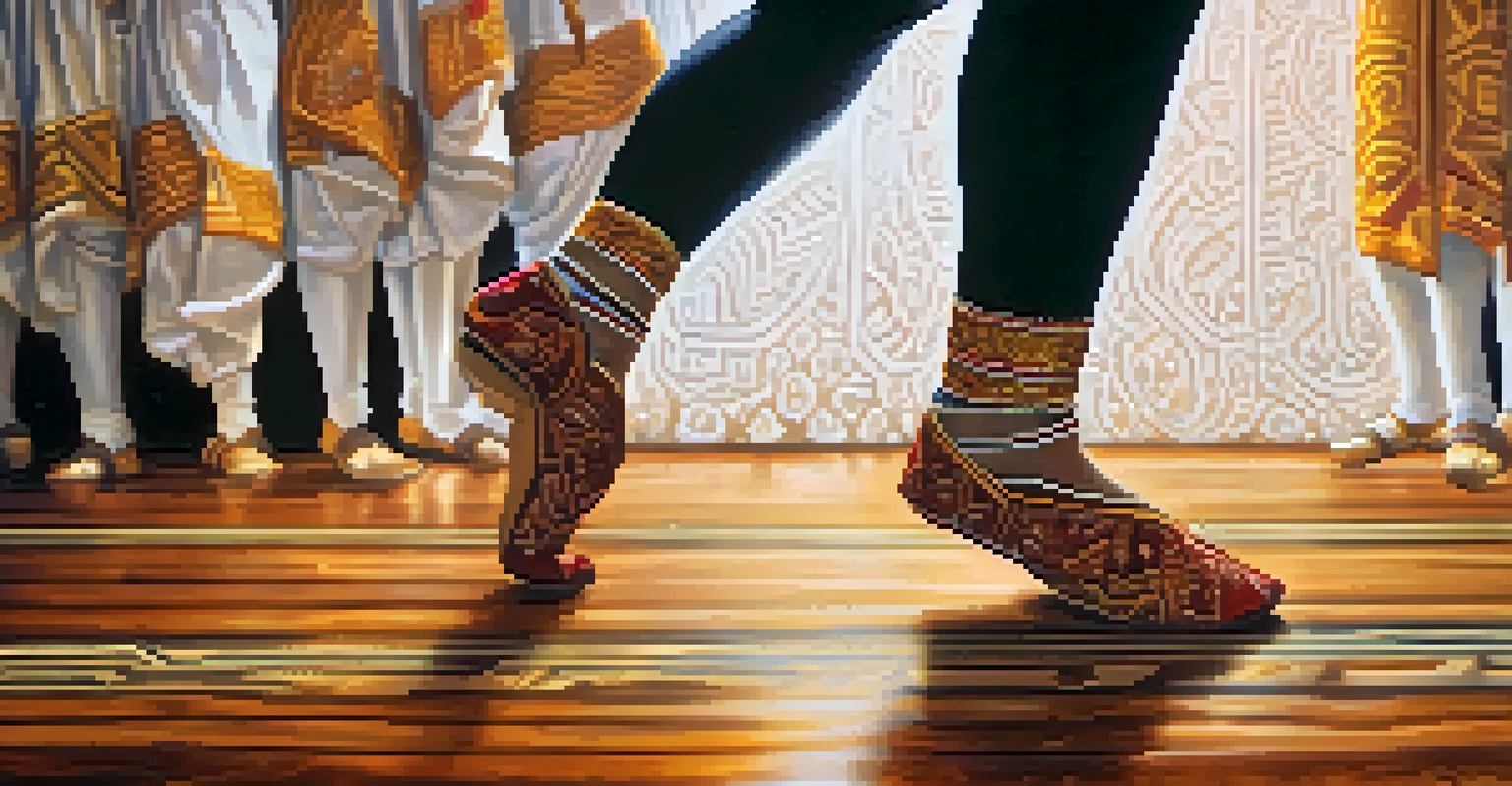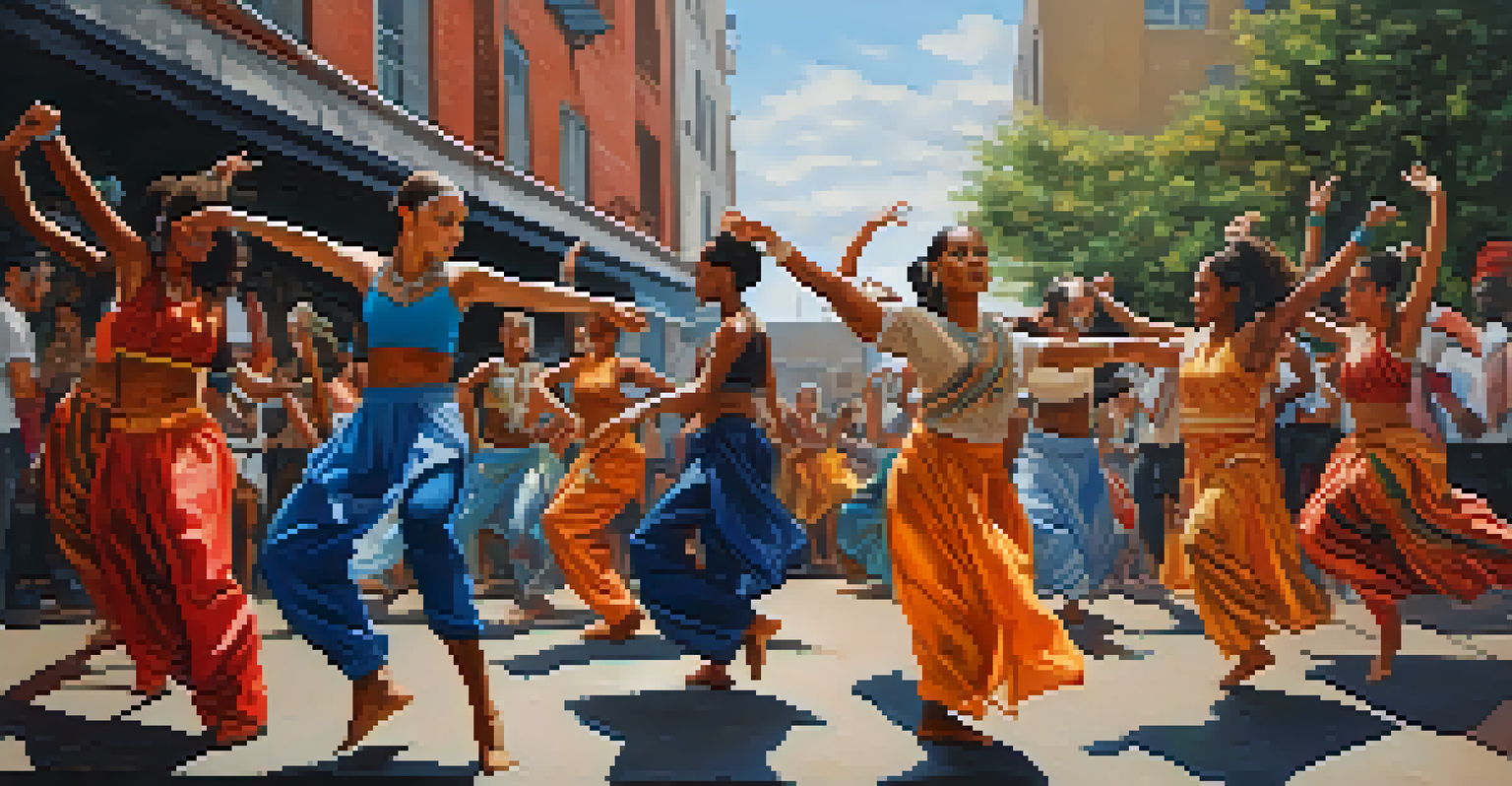Cultural Dance Forms and Their Role in Activism Today

The Intersection of Dance and Activism
Cultural dance is not just a form of entertainment; it often serves as a powerful vehicle for activism. By expressing identity and community values, dance can voice social issues and mobilize individuals toward a common cause. For instance, during the Civil Rights Movement, African American spirituals and dances played a crucial role in uniting people and spreading messages of hope and resistance.
Dance is the hidden language of the soul.
In many cultures, dance acts as a form of storytelling, conveying messages that resonate deeply with audiences. This storytelling aspect can highlight injustices and inspire change by connecting emotionally with viewers. When a group performs a traditional dance infused with contemporary themes, it creates a bridge between the past and present, making the message more relatable.
Ultimately, the fusion of cultural dance and activism fosters a sense of community and belonging. Dancers often come together to raise awareness about issues affecting their communities, showcasing how art can be a catalyst for social change.
Historical Examples of Dance in Activism
Throughout history, various dance forms have been pivotal in activism. Take the example of the 'Morris Dance' in England, which was used as a means of protest against social injustices during the 19th century. This traditional dance brought communities together to rally against the oppressive conditions of the time, showcasing how rhythm and movement can unite people for a cause.

Similarly, the 'Haka,' a traditional dance from the Māori people of New Zealand, has been used to assert cultural identity and protest against colonialism. This powerful dance, filled with chants and vigorous movements, serves not only as a cultural expression but also as a statement of resistance against oppression. It demonstrates how deeply rooted cultural practices can serve as tools for activism.
Dance as Activism's Voice
Cultural dance serves as a powerful medium for activism by expressing identity and addressing social issues.
These historical examples reveal the long-standing relationship between dance and social justice. They remind us that dance is not merely a form of art but a powerful medium for expressing dissent and rallying support.
Contemporary Dance Movements and Activism
In today's world, contemporary dance movements are increasingly intertwined with activism. Dancers and choreographers are using their platforms to address pressing social issues such as climate change, racial inequality, and gender rights. For example, the 'Dancing for Change' initiative encourages dancers to create works that raise awareness about various social issues, effectively blending artistry with activism.
The function of music and dance is to connect people to their culture, their community, and to one another.
Social media has also played a significant role in this fusion. Dancers can easily share their work online, reaching a global audience and sparking conversations around important topics. Hashtags like #DanceForChange have gained traction, allowing dancers from diverse backgrounds to unite in their efforts and amplify their messages.
By embracing contemporary forms of expression, dancers are not only keeping their cultural traditions alive but also using them as tools for advocacy. This evolution reflects the dynamic nature of dance and its ability to adapt to current societal needs.
Dance as a Form of Healing and Empowerment
Dance can also serve as a form of healing for communities affected by trauma and oppression. For many, participating in cultural dance is a way to reclaim identity and foster resilience. Consider the 'Taqwacore' movement, where punk rock and traditional dance intersect, allowing marginalized voices to express their struggles and triumphs through a unique blend of culture and music.
By engaging in dance, individuals not only find personal empowerment but also create a collective sense of strength. This is particularly evident in movements such as the 'One Billion Rising,' which uses dance as a tool to combat violence against women. Through this global campaign, participants share their experiences and unite in solidarity, demonstrating the healing power of movement.
Historical Significance of Dance
Throughout history, various dance forms have played crucial roles in protests, showcasing their impact on social justice movements.
Ultimately, dance provides a safe space for expression, healing, and empowerment. It encourages participants to confront their realities while fostering a sense of community and support.
Globalization and Cultural Dance Forms
Globalization has significantly influenced cultural dance forms, creating both opportunities and challenges for activists. On one hand, it allows for the sharing of diverse dance traditions on a global stage, fostering cross-cultural collaborations. For instance, the blending of traditional African dance with contemporary styles has given rise to new forms of expression that resonate with a broader audience.
However, globalization also raises concerns about cultural appropriation. When elements of a culture are used without understanding or respect, it can dilute the original meanings and significance. Activists must tread carefully, ensuring that their use of cultural dance honors its roots and conveys the intended messages.
Navigating the complexities of globalization requires a thoughtful approach, where dancers can embrace fusion while respecting boundaries. This balance is essential for maintaining the integrity of cultural expressions while using them as tools for activism.
The Role of Education in Dance Activism
Education plays a crucial role in the intersection of dance and activism. Workshops and classes that teach cultural dance forms often incorporate discussions about the social issues they address. This educational approach not only preserves cultural heritage but also empowers participants to engage in activism within their communities.
For example, schools and community centers that offer dance programs may include sessions on the history and significance of the dances being taught. By doing so, they foster a deeper understanding of how these art forms can serve as vehicles for social change. Students learn to appreciate the stories behind the movements, encouraging them to become advocates for their own communities.
Education Empowers Dance Activism
Educational initiatives that teach cultural dance also promote awareness of social issues, empowering participants to engage in activism.
Through education, dance becomes a tool for empowerment, equipping individuals with the knowledge and skills to effect change. This transformative process helps cultivate a new generation of activists who can carry forward the legacy of cultural dance.
Future Directions for Cultural Dance in Activism
As we look to the future, the role of cultural dance in activism is likely to evolve in exciting ways. With advancements in technology and social media, dancers have more tools than ever to spread their messages and connect with audiences. Virtual performances and online campaigns can reach global audiences, making it easier to highlight social issues and drive engagement.
Moreover, the rise of intersectionality in activism encourages collaboration between different cultural dance forms. This movement promotes inclusivity, allowing for diverse voices to be heard and celebrated. As artists come together, they can create innovative works that address a multitude of social concerns, fostering a richer dialogue around activism.

In embracing these opportunities, cultural dance will continue to be a vital force in advocating for social justice. Its ability to adapt and resonate with contemporary audiences ensures that it remains a powerful medium for change.